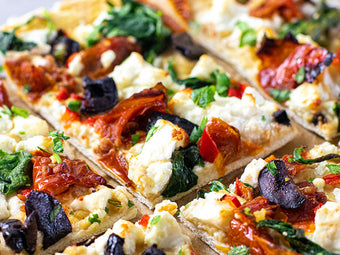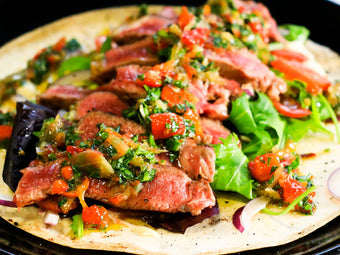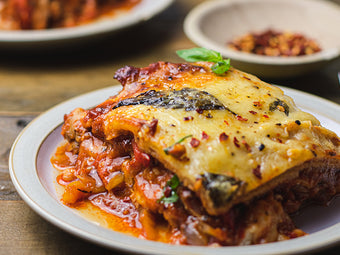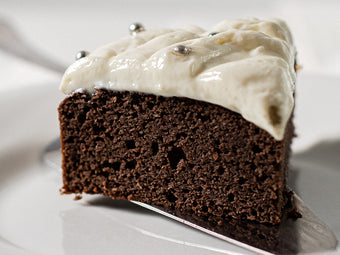The best way of hitting your 30g fibre a day
It’s time for protein and fats to move aside and fibre to take the spotlight. We’re frequently told that we need to eat more fibre as it can actually be more beneficial to our gut health.
Currently in the UK we (adults aged 16 or over) are recommended to consume 30g of fibre a day (11-16-year-olds = 25g, 5-11-year-olds = 20g, 2-5-year-olds = 15g) to help reduce the risk of cardio-metabolic diseases such as cardiovascular disease, diabetes, obesity and colorectal cancer. However, according to the National Diet and Nutrition Survey, we are only consuming around 15-21g a day.

What is fibre?
Fibre is a term used to describe a type of carbohydrate found in plants that cannot be digested in the small intestine. Instead, it passes down to the large intestine where it is broken down by bacteria.
Fibres are divided into two groups; insoluble and soluble, which both promote healthy digestion. Most foods contain both types but are often richer in one or the other. Insoluble fibre passes through the gut without being broken down and adds bulk to stools, helping food move through the digestive system more quickly. In comparison, soluble fibre absorbs water in the gut to form a gel-like substance which helps digestion.
Which foods are rich in fibre?
Fibre is found in most plant foods including:
- Vegetables such as carrots, broccoli and potatoes (skins)
- Fruits such as apples, bananas and berries
- Legumes like beans, lentils and peas
- Wholegrains like bread, pasta, rice and breakfast cereals
- Different grains like oats, barley, rye
- Nuts and seeds like almonds and sunflower seeds
How can we increase our fibre intake?
Now you know what fibre is, why it is good for you and which foods are the best sources, here are some ways you can increase the fibre in your diet:
- Add beans and lentils to stews, curries, soups and salads
- Swap white bread, pasta and rice for wholegrain versions
- Eat potatoes with their skins on
- Choose a high fibre, wholegrain breakfast cereal such as porridge, muesli, bran flakes and wholewheat biscuit cereal
If you are feeding a child that is under 2 years old please bear in mind that you are not recommended to only give wholegrain starchy foods to under 2’s. Due to wholegrains being high in fibre, they may fill your child up before they have taken in the calories or nutrients they need. After the age of 2 you can gradually introduce more wholegrain foods. Please also note that if you are suffering from a digestive disorder such as Irritable Bowel Syndrome, you may need to modify your fibre intake. If you need further guidance, please speak to your doctor.

Where can Lo-Dough Benefit you
This is an example of what you would need to eat in order to hit the 25-30g of fibre needed each day -
- half a cup of rolled oats - 9g fibre
- two Weetabix - 3g fibre
- a thick slice of brown bread - 2g fibre
- a cup of cooked lentils - 4g fibre
- a potato cooked with the skin on - 2g fibre
- half a cup of chard - 1g fibre
- a carrot - 3g fibre
- an apple with the skin on - 4g fibre
So if you were on a specific diet, for example, keto, you wouldn't be able to eat half of these foods because of the high carb content that comes with the benefits of the fibre content.
This is an example of what you would need to eat in order to hit the 25-30g of fibre needed each day using Lo-Dough -
- Lo-Dough Apple Turnover - 15g fibre
- Lo-Dough Cracker Bread & Hummus Dip- 15g fibre
By using Lo-Dough to replace traditional dough-based products, calories and carbs can be dramatically reduced in many favourite dishes with fibre being 10x greater than most bakery products. Lo-Dough provides the easiest way to boost your fibre & to reduce your carbs and calories.
Lo-Dough is different, it's a light and soft universal flatbread that contains only healthy fibre and natural protein.
Make it with Lo-Dough











